A good place to start with astrophotography is by taking nightscapes – wide-field, panoramic images of bright stars and the Moon, perhaps set against a horizon.
Nightscapes are particularly good when that great sweep of stars that makes up our own Galaxy, the Milky Way, takes centre stage. Constellations also make great subjects in panoramas.
Sign up for our latest online astrophotography Masterclass
Find out more about the BBC Sky at Night Magazine DSLR Astro Imaging Masterclass.

Your starry astrophotos can also reveal the movement of Earth by capturing star trails and tracking the changing positions of the planets over time.
Here we'll show you the equipment, settings and techniques you need to photograph the stars and produce beautiful astrophotos in the process.
For more help capturing images of the night sky, read our beginner's guide to astrophotography.
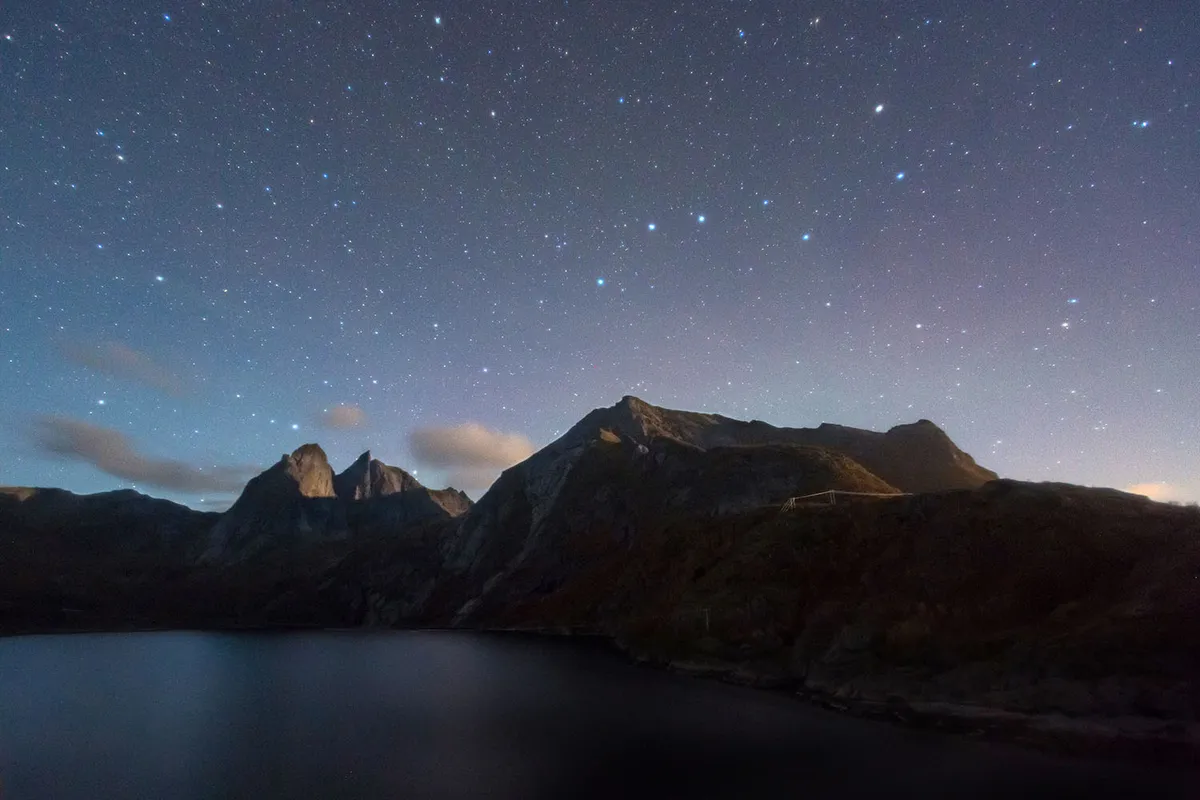
What camera to use for photographing the stars
Many of us use a compact camera or smartphone to take everyday pictures, so why not turn them on the night sky?
It is possible to use a smartphone to photograph the night sky. They can be used for bright twilight subjects such as planetary conjunctions and there are plenty of apps available to help you get the most out of this sort of photography.
Today’s compact cameras, on the other hand, can take reasonable images in low-light conditions and some even have manual modes that let you take full control of the camera’s functions.
The ability to adjust some camera settings for yourself will make for much improved images.
A good example is the Canon PowerShot G1 X Mk III compact. It lets you keep the camera’s shutter open to the starlight for up to 30 seconds and its 24.2-megapixel sensor allows for ISO values up to 25,600.
For more advice, read our guide to the best cameras for astrophotography.
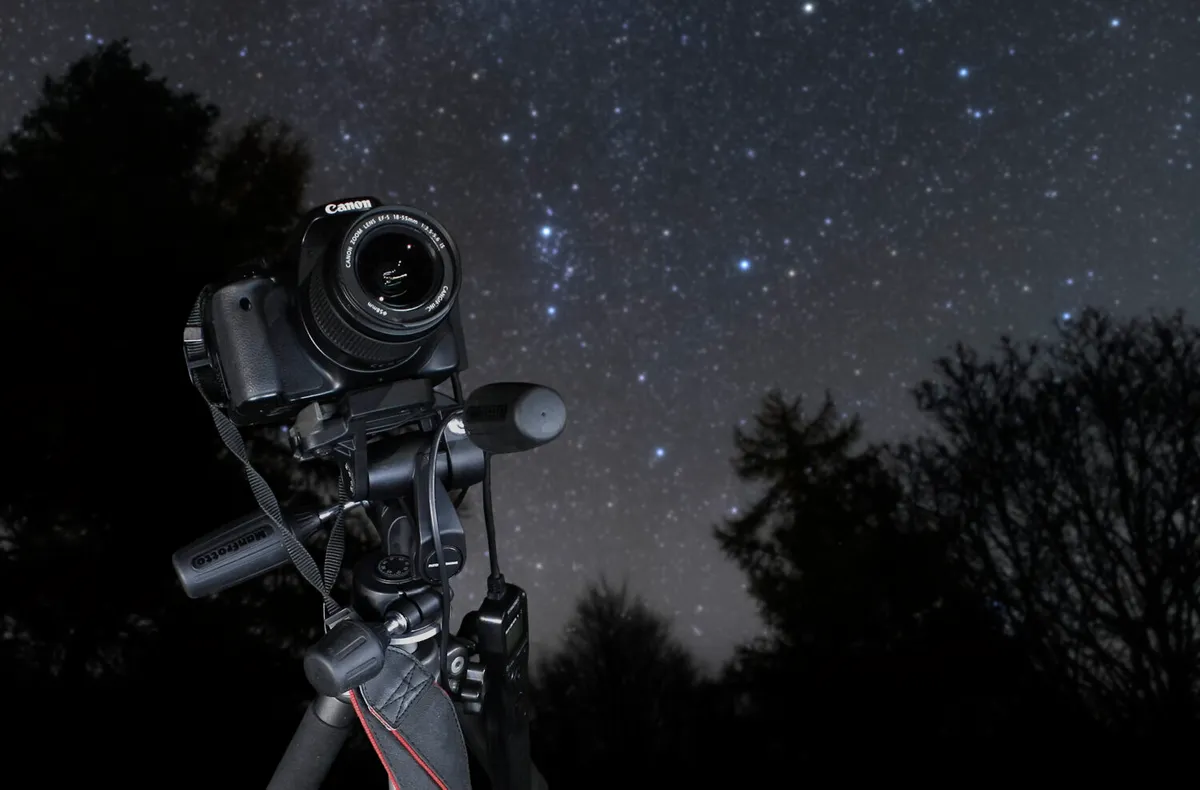
Many Nikon and Fuji compact cameras have settings for night portraits, night landscapes and fireworks that can be used to capture views of the stars.
Settings like these allow you to capture a wide array of subjects, but there are downsides to compact cameras: they often don’t let as much light reach the imaging chip as wider DSLR camera lenses do and they don’t have the flexibility of interchangeable lenses.
DSLRs offer a much wider range of functions and most experienced imagers will have one in their arsenal.
DSLRs have the widest range of settings and offer full manual control. They also have interchangeable lenses, so you can swap to a more powerful lens to close in on bright deep-sky objects, such as the Pleiades open cluster in Taurus or the Flame Nebula in Orion.
Keep yours in tiptop condition with our guide on how to clean a DSLR camera. Get more out of your camera with our DSLR guide.
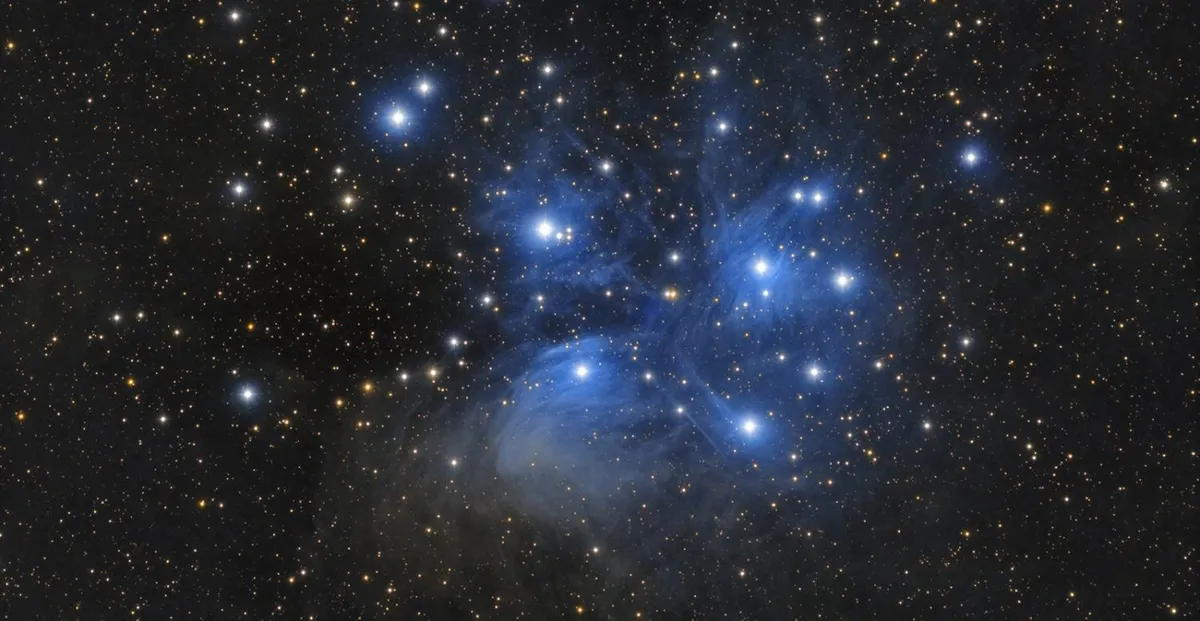
Today’s DSLR imaging chips have wide ISO sensitivity ranges, allowing the faint light from many more stars to be recorded for great results.
Many DSLRs also have an option to set the shutter speed – the exposure – in increments up to 30 seconds.
After that, they’ll have a bulb, or ‘B’, setting that keeps the shutter open as long as the release is pressed for even longer exposures – great for star trails.
Canon and Nikon DSLR bodies stand out for what they offer budding astro imagers.
The Canon EOS 4000D, 1300D, 750D and 200D models are all good basic DSLRs for astrophotography.
The Nikon D5600, D610 and entry-level D3500 also fit the bill, as does the Sony a68.
It’s worth noting that DSLR sensors come in two sizes: a smaller format called APS-C (used by all the previously mentioned camera bodies except the D610) and the larger ‘full frame’, equivalent to the old 35mm film format.
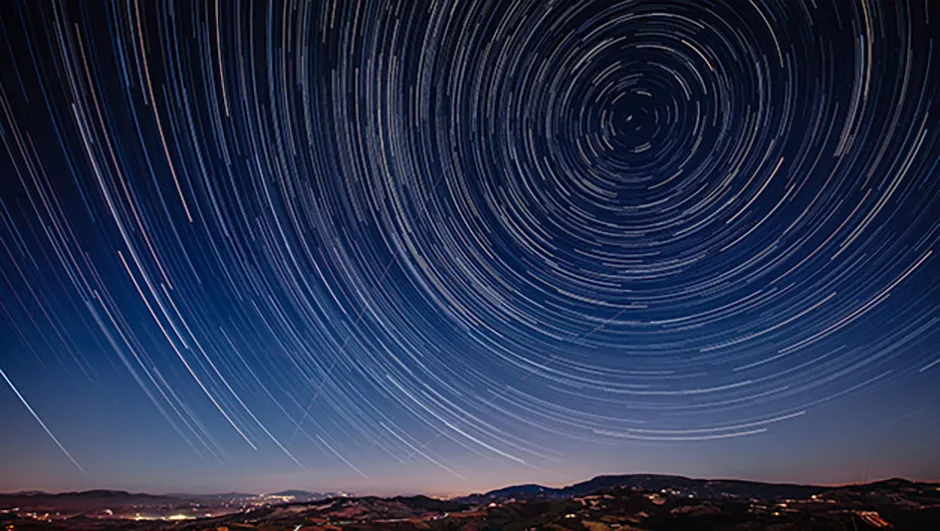
Tripod is essential
To photograph the stars you need another piece of equipment: a tripod.
This will give you the stability to take long exposures without any vibrations affecting the image.
Exposures longer than 1/30th of a second will start to lose sharpness and show camera shake – it's almost impossible to hold a camera steady by hand for long periods.
Sturdy tripods are best, even if they're more expensive, as lightweight tripods can tremble in the breeze and spoil any nightscapes you take. Brands to consider include SLIK, Manfrotto and Gitzo.
Even with your camera mounted on a sturdy tripod, simply pressing the shutter release button is enough to rattle the whole setup and cause your image to blur, so you’ll also need a remote shutter release control.
One of these devices, either mechanical or digital, can make a big difference between taking a shaky picture and a shot with pin-sharp stars (more on this below).
Finally, don’t forget that using a white-light torch will ruin your night vision, which takes at least 30 minutes to build up.
Use a red-light torch instead, as this sort of illumination won't affect your eyes' adaptation to the dark.
This also includes your phone! Read our guide on how to turn your phone's screen red. We've also got a simple DIY guide on making your own red light torch.
Astrophotography camera settings explained
Aperture (f/number)
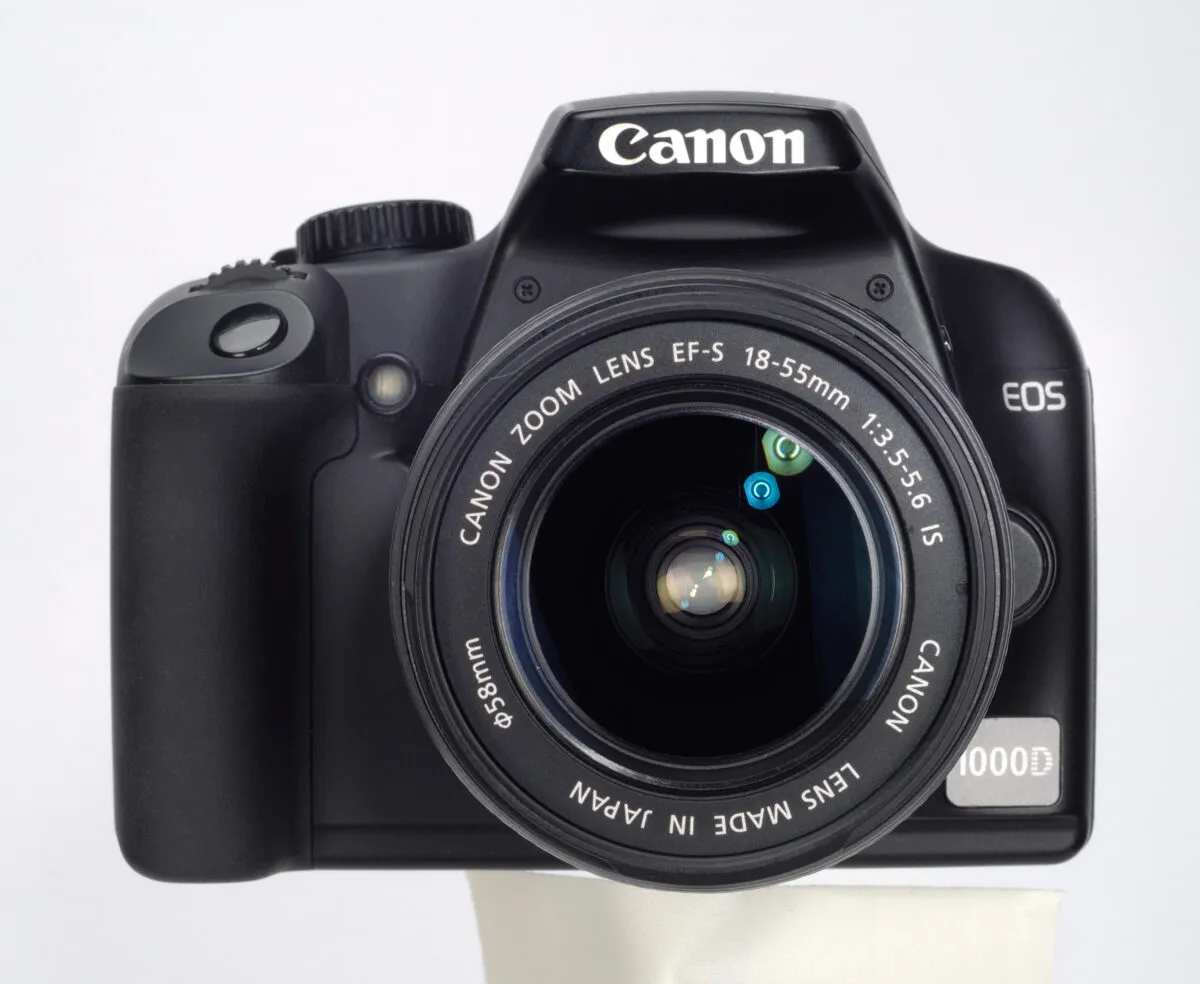
This is the diameter of the lens that allows light to reach the imaging chip. The amount of light let in can be increased or reduced with an iris in the lens – this determines the f/number. A low f/number (such as f/1.8) gives a wider aperture and lets more light in.
Sensitivity (ISO)

The ISO is an international standard for the sensitivity of the chip in digital cameras. Setting this to a low value like 100 gives high-quality images that need more light; high values like 3,200 let you photograph faint targets, but with a decrease in quality.
Exposure (Shutter speed)

The shutter speed determines how long the imaging chip is exposed to light.
The slower the shutter speed, the longer the exposure and the more light strikes the chip.
Many cameras offer a mirror lock-up mode to minimise vibrations from the shutter action.
Which lens to use for photographing the stars

There are several DSLR lenses that are useful for photographing the stars.
Standard DSLR zoom lenses have maximum focal lengths of 50-70mm and can capture the main constellations, brighter sections of the Milky Way and detail within the aurora.
To capture the larger constellations or large auroral displays, a wide-angle lens with a focal length of 16-28mm is needed.
DSLRs also have high ISO settings compared to film cameras, and you can use these with the higher magnification of 100-500mm focal-length lenses to capture bright stars in asterisms or star clusters.
If you can go for fixed-focal-length lenses, all the better: they can be easier to focus than zoom lenses and often have wider aperture settings, enabling more light to get to the sensor.
Best camera settings for photographing stars
Constellations
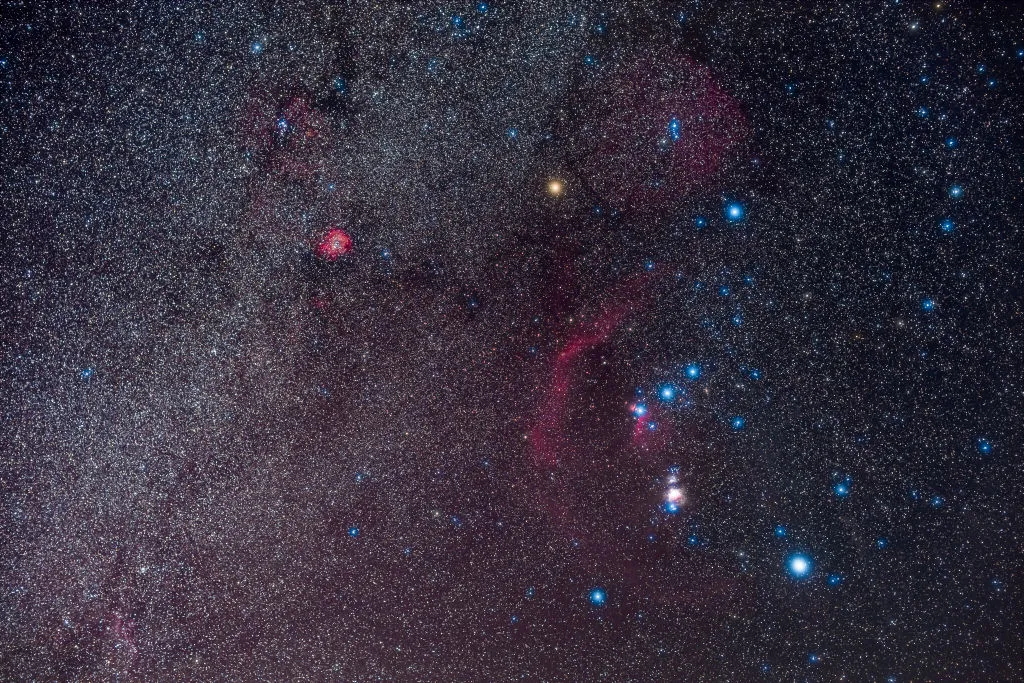
- Exposure 15 to 40 seconds
- Aperture f/2 to f/2.8
- Sensitivity ISO 800 to 1600
Twilight landscapes
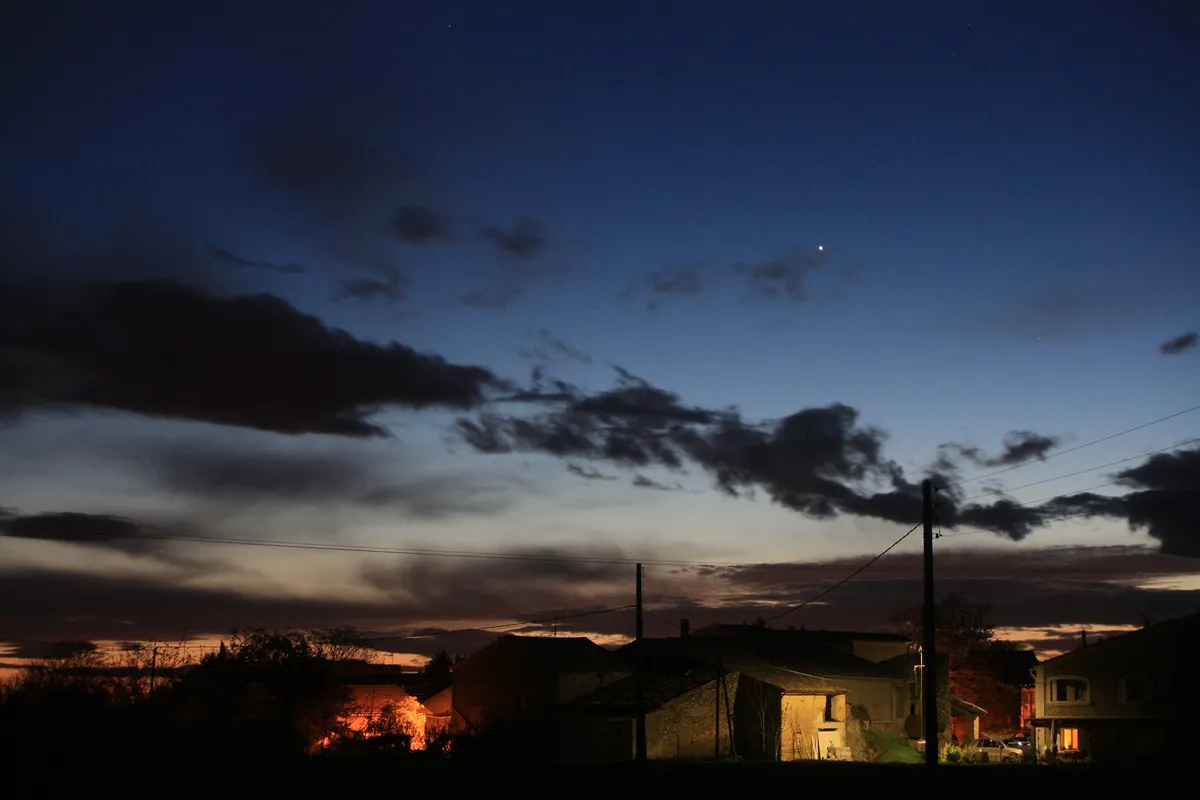
- Exposure 1 to 10 seconds
- Aperturef/2.8 to f/5.6
- SensitivityISO 100
Aurorae
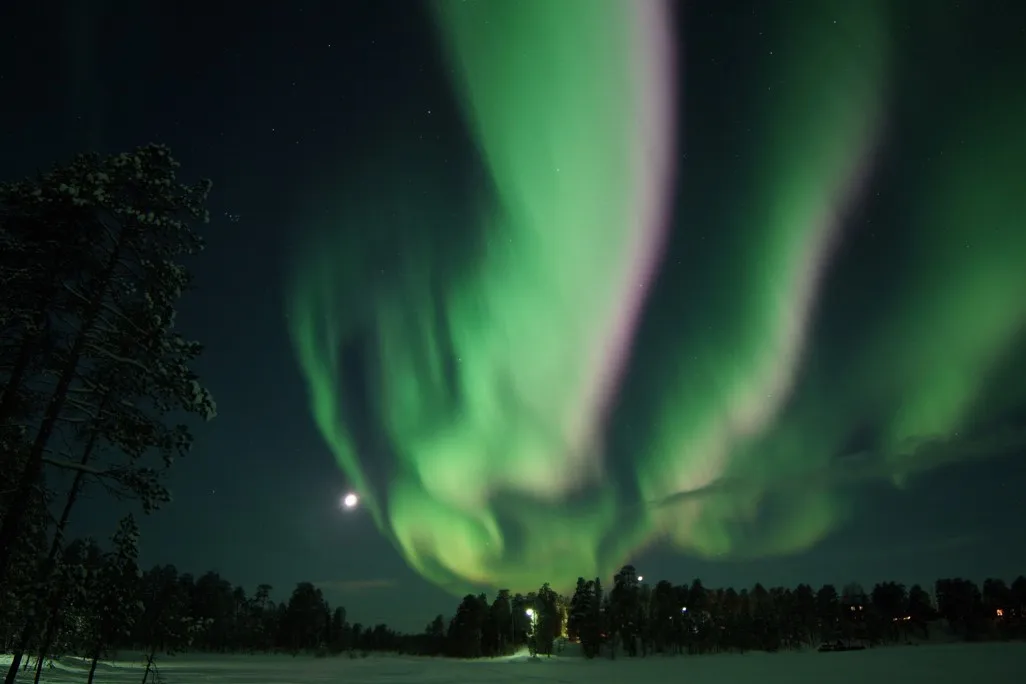
- Exposure3 to 30 seconds
- Aperturef/2 to f/2.8
- SensitivityISO 400
Star trails
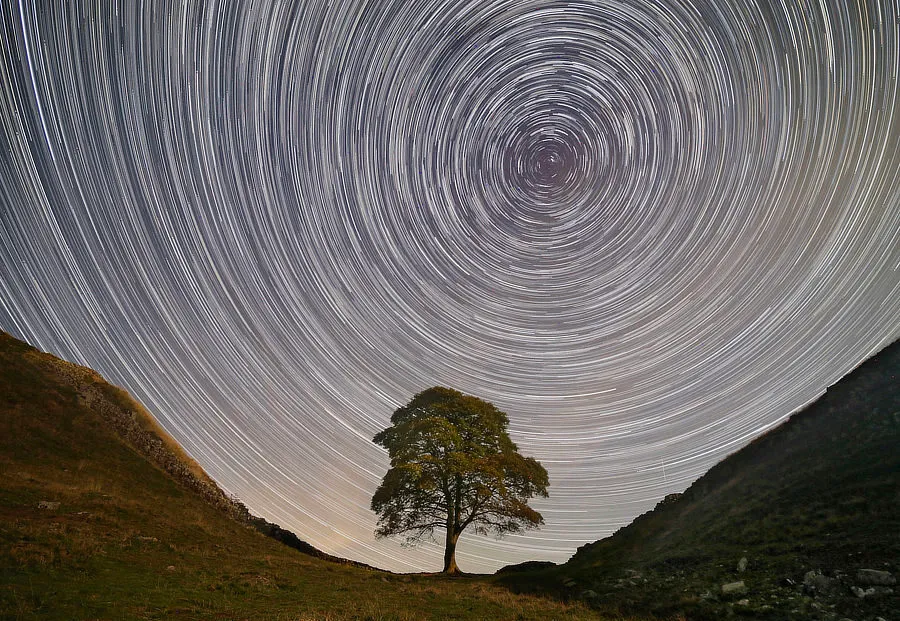
- Exposure5 to 60 minutes
- Aperture f/4 to f/11
- SensitivityISO 100
Set up your DSLR for photographing the stars
Bulb
The bulb setting allows you to control the length of exposures. It lets you take shots lasting from one second upto several minutes, using a remote shutter release or the delayed timer.
Such a wide range of exposures can be exploited in your shots – starscan be made to look like pinpricks with a short exposure, or trails with a longer one.
File format
Many cameras come with a range of file format settings for your pictures, including Raw, JPEG and Raw+JPEG. Get to know your camera’s file formats and ideally use the Raw setting.
While this will produce the highest quality results, the larger file size means that any given memory card won't be able to hold as many Raw image files as JPEGs.
Noise reduction
This facility is built into many digital cameras and should be used carefully. When taking pictures with a lot of light, such as twilight scenes, noise reduction can improve the shot by cutting out artefacts generated by the camera’s sensor.
But it can remove fainter stars from images of stars and constellations. If you're shooting these, it’s best turned off.
Picture styles
This is another facility that has to be used with caution. Many DSLRs let you alter settings such as contrast, sharpness and colour saturation, and save the alterations as a user-defined setting.
Subtle adjustments made here can enhance your images, but it’s easy to alter a picture too much. The default settings are often the best to begin with.
Tips for photographing stars with a DSLR camera
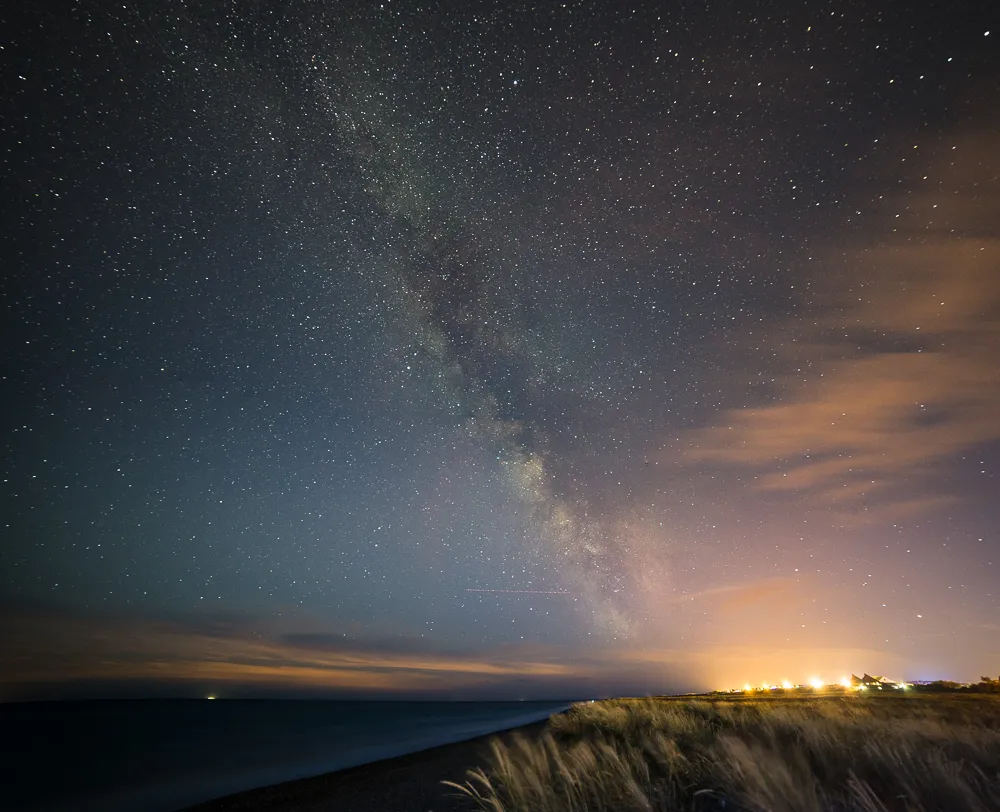
DSLRs are particularly good cameras for astro imaging because of the amount of manual control they provide.
Thanks to interchangeable lenses they offer a wide range of magnifications – from what you can see with the naked eye to views similar to those through binoculars.
Their ability to take long exposures at high ISO values means that DSLRs can also capture images of the Milky Way that you couldn't see with your eyes.
This is because when light reaches your eye, your retina immediately sends signals to your brain.
With a long exposure, however, light can build up on a camera’s sensor before the shutter closes again.
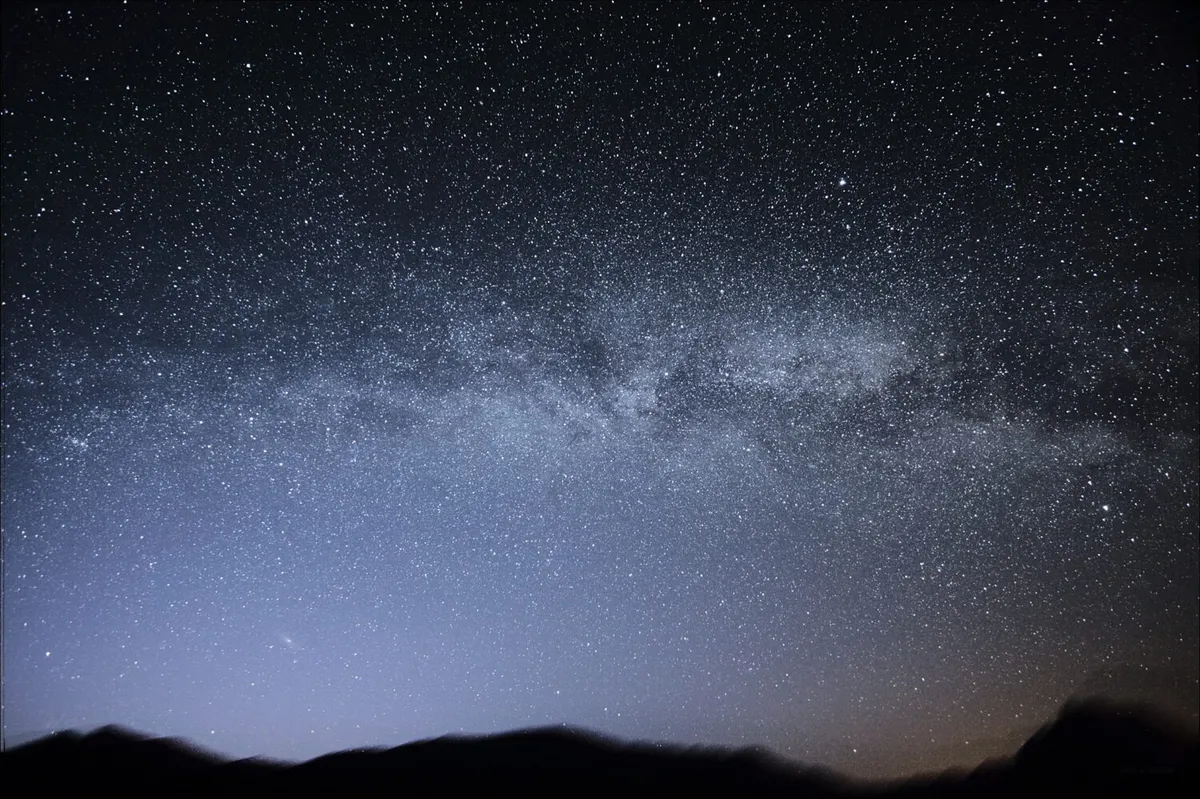
But you need to make use of the manual control a DLSR offers to get the best results, as the built-in autofocus settings aren’t so good for capturing the night sky.
Learn to manually control your DSLR's ISO, exposure and lens aperture settings, though, and you'll quickly figure out how to get the best results in the dark.
The best way to start is to bracket your exposures: take a range of different exposure lengths at various ISO values to see which combination produces an image with the best balance between sky darkness and star brightness.
Try exposing for five seconds either side of an initial exposure of 15-20 seconds.
Attach your camera to a tripod and plug in the remote shutter release (or use the delayed timer setting if you don’t have one).
From a moderately dark site, you can get a good picture of a constellation such as Leo with a 50mm focal-length lens by setting the ISO to 400 and the exposure to 15 seconds (use the bulb setting if the long-exposure range is limited).
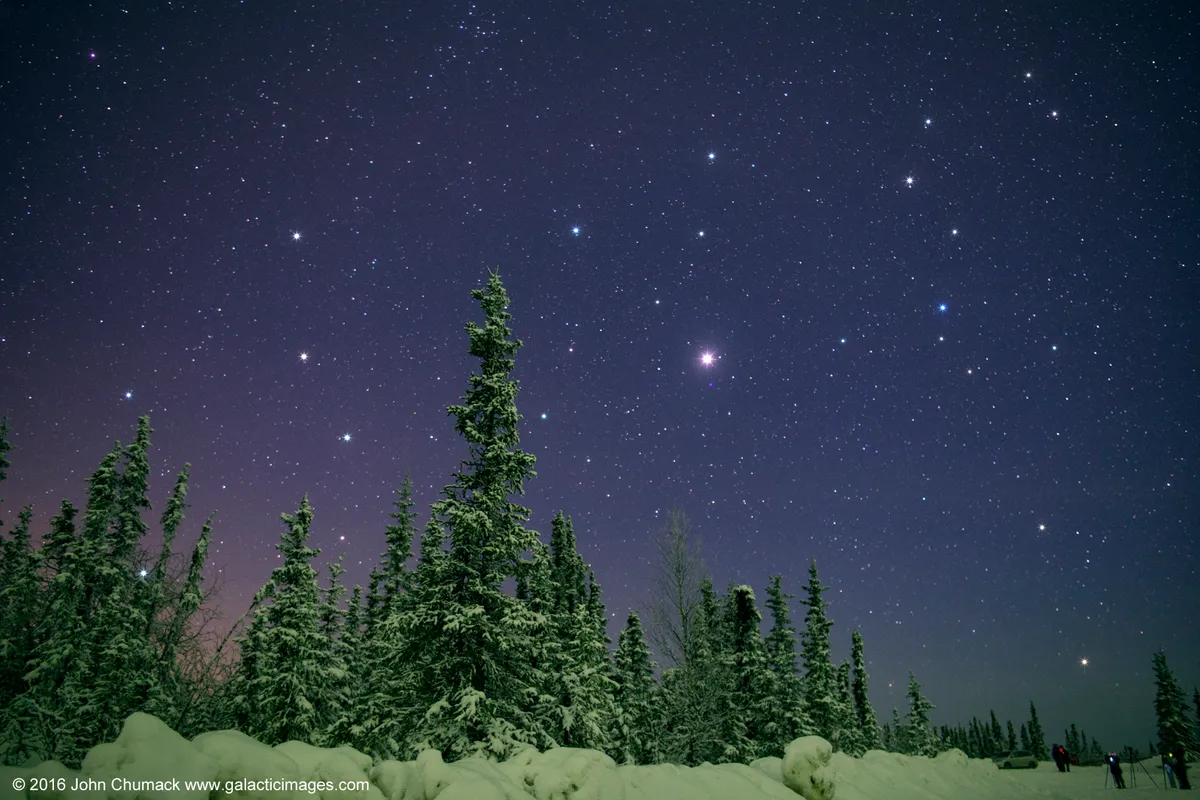
Set the aperture as wide as it will go – look for f/1.8 or even f/1.4. Focusing on stars can be tricky, but there are ways around this (more below).
Once you’ve taken the image, check it for elongated stars. If there is star trailing, take another picture with the same settings but reduce the exposure to 10 seconds.
If you have a camera with an APS-C sensor, such as the Canon EOS 1300D, star trailing can become more obvious and you may need shorter exposures.
These sensors only see the central area of the image projected by the lens, and the final image appears magnified compared to the same lens used with a full-frame sensor.
Another good tip is to take a few pictures with the lens cap on. This gives you ‘dark frames’, in which the only data is the noise of the sensor itself.
This noise can then be subtracted from your final image with photo-editing software.
How to get pin-sharp stars without star trailing
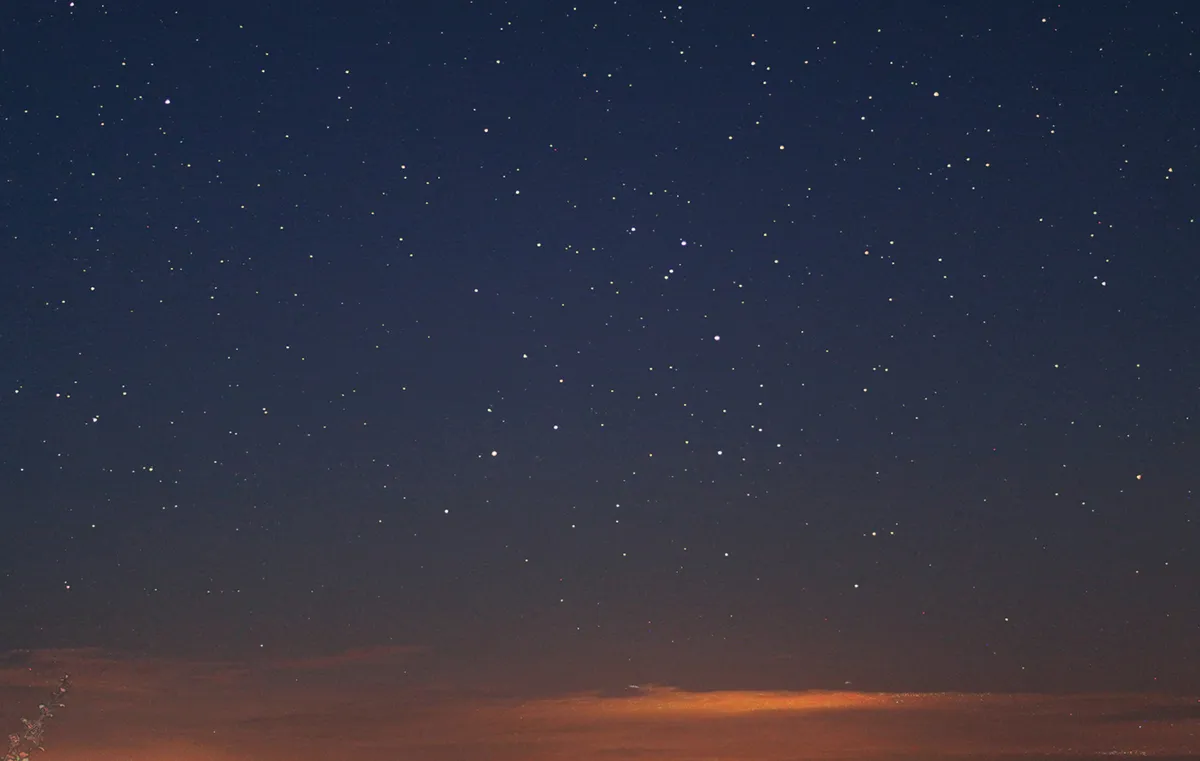
While focusing in the daytime is easy, focusing at night is a completely different matter, and you will need to master this if you want to photograph the stars without star trailing.
However, if done properly, star trails can make for a wonderful astrophoto. For more on this, read our guide on how to photograph star trails.
Autofocus relies on contrast, so the dark sky, coupled with the faint and point-like nature of stars, means that a DSLR’s autofocus will struggle to find anything to lock on to.
Squinting through the camera’s viewfinder won't help much either as it's often only the brightest stars that will be visible and those tiny points won’t be enough to manually focus on.
Compact cameras don’t find focusing in the dark any easier. The zoom lenses on some models focus past infinity, making it difficult to bring the view to sharp resolution.
Most manual fixed lenses for DSLRs can be set at infinity, but it’s often not where you’ll find the best focus. Here are some tips and tricks to help you do so.
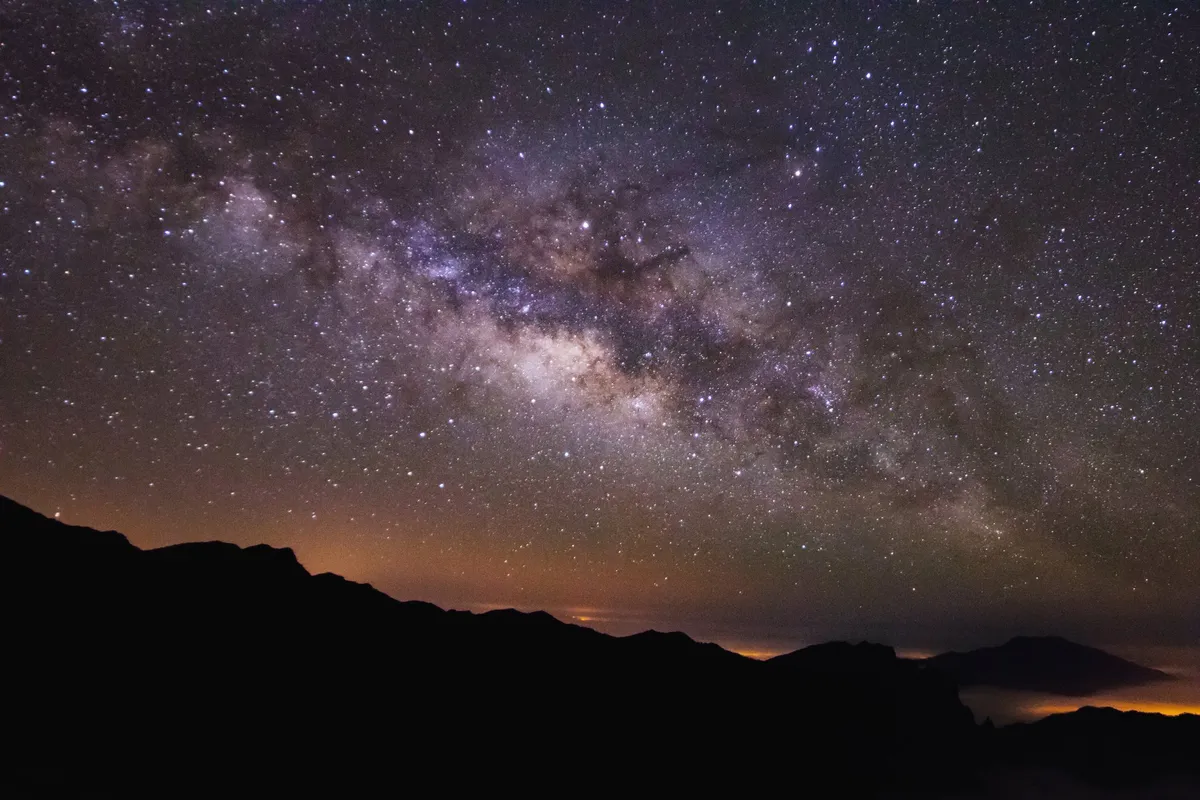
Live view
Most DSLR cameras have a live view screen that shows you what you’d see through the viewfinder. The live view is often magnified and you'll usually be able to angle the screen to a more comfortable viewing position, which are real benefits for shooting twilight scenes, as well as the constellations, the planets and the Moon.
Magnified finders
These can be bought for most brands of DSLR. You attach them to the camera’s viewfinder and their right-angle design makes viewing more comfortable.
The 2x magnification will help you to judge focus a lot better on brighter stars. Take a test exposure to confirm if the shot is in focus and then adjust the focus again, if needed.
Camera control
For autofocus to work it needs a strong light source to lock on to – most night-sky objects are too faint for this. Aiming at a distant streetlight or the Moon can help it find something to fix on.
Once you’ve found focus, turn off the autofocus and don’t touch the lens, otherwise you risk knocking it out of focus again.
Consider composition
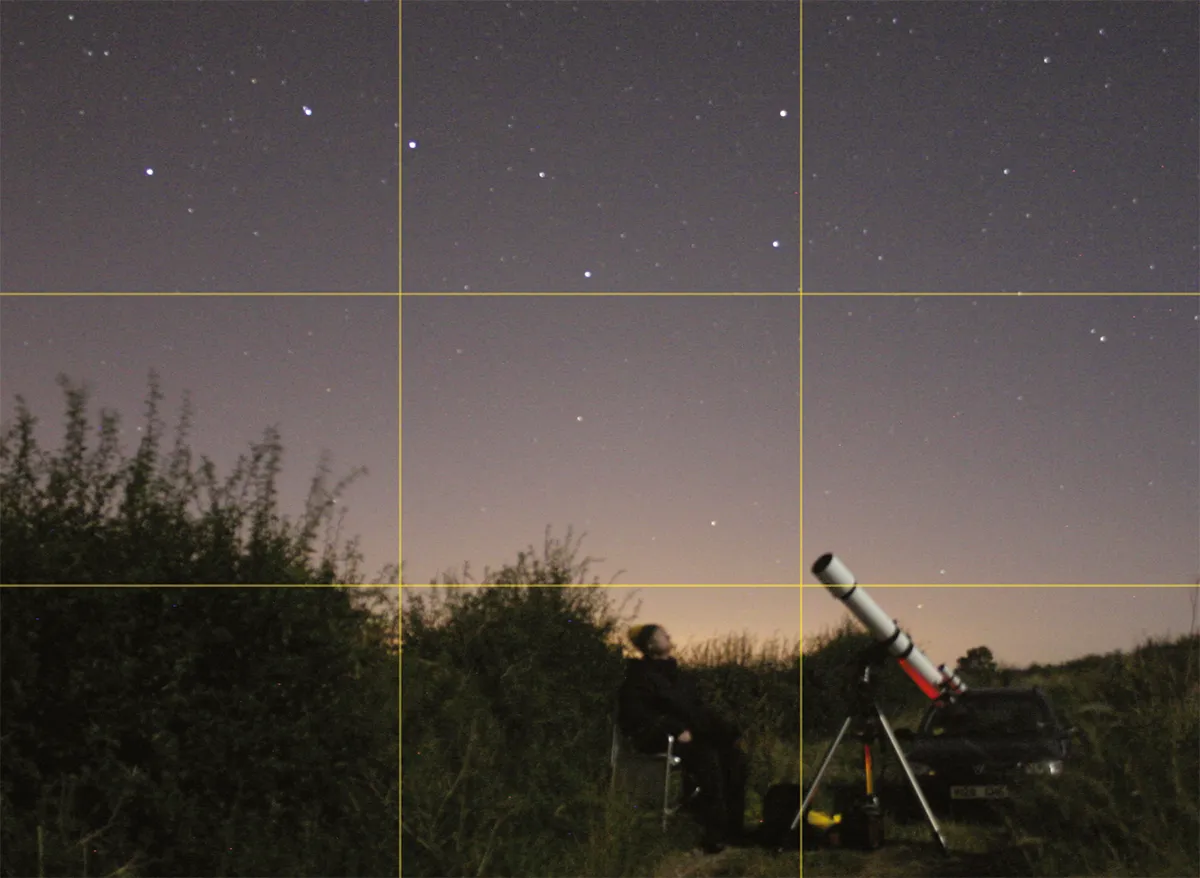
To make your images of the stars more interesting, include an object in the foreground to complement the star field or constellation behind it.
Good things to go for are lone trees, buildings with lit windows, dramatic terrain, telescopes and even people.
Use a red- or white-light torch, or a camera flash, to illuminate the foreground. Combining this with a longer exposure will still reveal the stars.
A neat trick is to get one person to appear in several places in the photograph.
Give the person a torch, get them to stand still with the torch on and then switch it off while they move to a new position, before turning the torch on again.
In the finished photo, they will appear in several places at once.
On the other hand, a person walking through the scene with a red light switched on during the exposure creates streaks, which can look quite artistic.
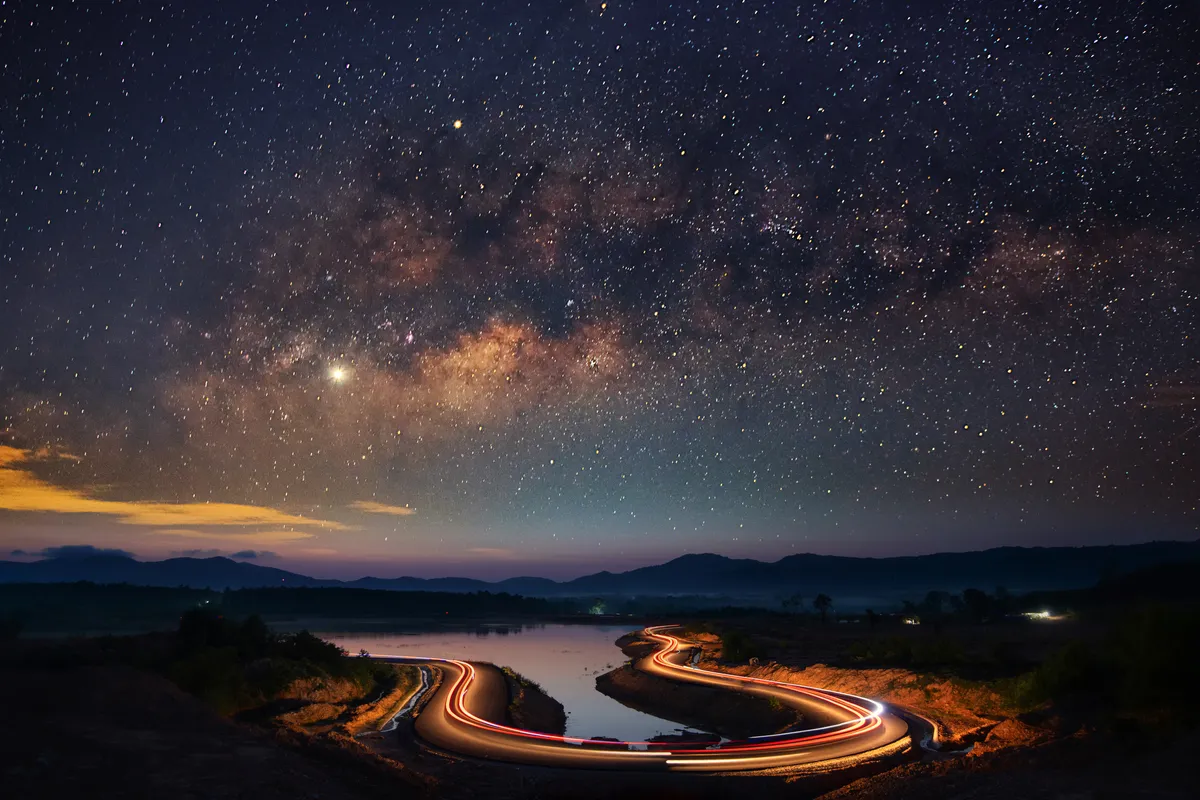
Even a twilight sky can add drama by producing a lighter background sprinkled with stars, enabling you to silhouette a foreground object.
Cities and towns taken from a high vantage point can add their own, unique effect to a wide-field view.
There are a few things to avoid, however: nearby streetlights or security lights, for example.
The light pollution from these can interfere with your image and can create distracting blobs of light known as lens flares.
In extreme cases they can even wash out the colour and reduce contrast in your pictures.
The rule of thirds, which divides an image into a grid of nine equal sections, can be useful to for composing a shot.
If you’re taking an astro landscape, the ground would take up the lower third of the image, drawing your view up to the stars.
Get to know your equipment and your camera's settings. Experiment and don't be disheartened if your first shots of the stars aren't like the ones you've seen online.
By getting out there and learning from your mistakes, you'll soon be capturing pin-sharp images of beautiful starry night skies in no time.
Have you managed to capture a beautiful image of the Milky Way or pinpoint stars in a constellation? We'd love to see it! Get in touch by emailing contactus@skyatnightmagazine.com or via Facebook, Twitter and Instagram.
Click here for some ideas of how at catalogue your stars once you've photographed them
